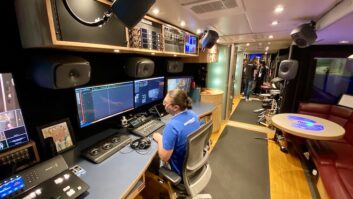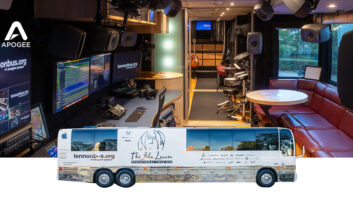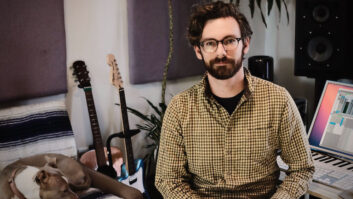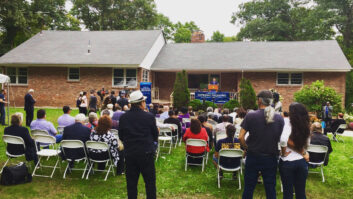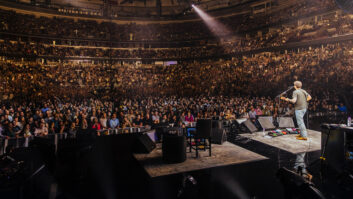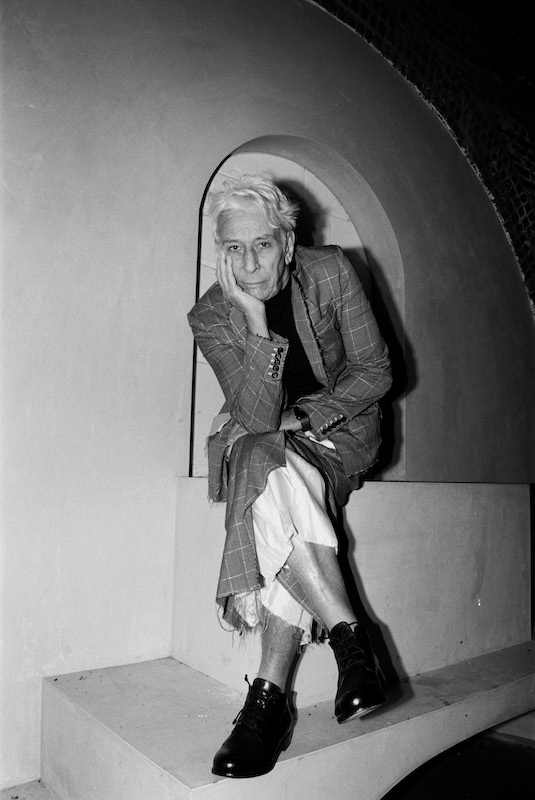
John Cale, who will celebrate his 81st birthday in March, has an enviable resumé, but he’s not one to rest on his laurels. Neither does he show any sign of slowing down, releasing this month his 17th solo studio album, Mercy, a project as fresh as anything that he’s put out during a long and storied career.
“There are no rearview mirrors with John Cale,” says Dustin Boyer, a guitarist in Cale’s band and his in-house engineer since 2005. “He’s always moving.”
Cale has certainly earned the right to retire. Born in Wales and classically trained in London, he moved to New York City and, in 1962, co-founded one of rock ‘n’ roll’s seminal bands, the Velvet Underground, whose albums subsequently became a touchstone for so many musicians. His first production gig was the 1969 debut studio album by another legendary band, the Stooges. Since 1970, he’s released a long, long list of solo albums, movie scores, collaborations and productions.
Cale Visits Ocean Way
The 12-song Mercy album emerged over the past few years, Boyer says, and was almost entirely recorded at Cale’s private ARM Studios in downtown Los Angeles, where the pair work together as many as 300 days a year. The facility includes a tracking room that doubles as a rehearsal space for the road band, a tape archive room that’s about to become a drum booth, and a gym plus other amenities.
“It’s an awesome workspace and we never leave,” Boyer laughs. “It’s really intimate here in the control room; we sit about three feet apart.”
Nita Scott, Cale’s manager and executive music producer, oversaw a major remodel of the studio during the pandemic. The control room still features the modified 32-channel Toft Audio Designs desk that was installed in 2010 and Cale’s trusted Genelec monitors from 1994. An RME Fireface interface has more recently been supplanted by a UA Apollo, Boyer reports.
CORE BAND, PLUS GUESTS
The Mercy album features Cale’s longtime drummer Deantoni Parks and bassist Joey Maramba, plus, of course, Boyer. Cale contributes various keyboards, viola, bass, drums and vocals. There are also guest appearances by the late Nigerian drummer Tony Allen, Laurel Halo, Weyes Blood, Tei Shi, Animal Collective’s Avey Tare and Panda Bear, Dev Hynes, Sylvan Esso, Actress and Fat White Family, most of whom were recorded in-house at ARM Studios.
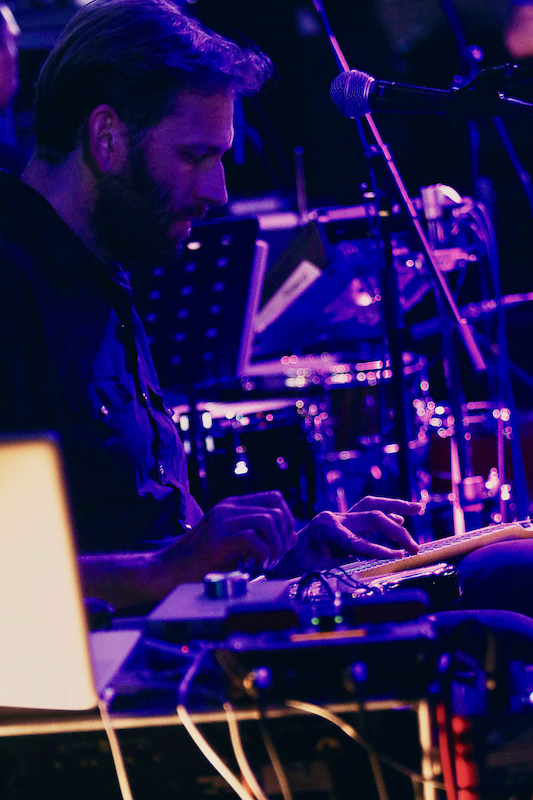
“We went to London and recorded Tony Allen,” reports Boyer, who later co-mixed the song, an alternate version of “Mercy,” with Nita Scott. The rest of the tracks were sent out to be mixed by Seven Davis, Jr, Mikaelin “Blue” BlueSpruce, Tokimonsta and Justin Raisen. “We haven’t really done that before. They’re all cutting-edge and they all have the same passion that John has.” The album was mastered by Joey Bozzi at Bernie Grundman Mastering.
There’s little doubt that Cale keeps moving forward. There are relatively few similarities between his milestone Paris 1919 or Music for a New Society albums of the 1980s and Mercy. “He’s an avid fan of modern hip-hop and the way it’s recorded,” Boyer says, especially the sparseness of a song like Snoop Dogg’s “Drop it Like it’s Hot.”
If anything, Cale has always been ahead of his time. Take his 1980 song, “Rosegarden Funeral of Sores,” which was covered and popularized by Bauhaus. “I hear that and I’m like, ‘That distorted vocal; how’d you do that?’ It could have been recorded last week,” Boyer marvels.
When Cale comes into the control room every morning, he’s ready to work, so Boyer keeps everything patched. “He’ll start with an idea,” Boyer says. “Sometimes it’s on piano. He might tap his legs or knock on the body of a guitar. He’ll hum something or do a pseudo beatbox.” They might use a click, but lately, he says, “We’ve been doing little drum loops—it’s a lot more fun.”
RECORDING AT ARM STUDIOS
Cale uses Apple’s MainStage software live, and in the studio will build a rhythm using its Ultrabeat feature, the iMPC app or the Koala sampler app. “We do a few little noises and whatnot, then throw it into the simple sampler in Pro Tools,” Boyer says, noting that Logic is also sometimes in the mix.
Boyer used a Neumann U 87 on vocals, drums—in addition to Royer ribbon mics—and other applications on this album. But Cale’s vocals were mainly captured in the control room on a Shure SM7, often while he also played a keyboard. “The SM7 has been awesome; I love those mics,” he says. “Mostly we leave the speakers on; we don’t go into cans. You hear some of the keyboards tapping [through the SM7], but there’s pretty minor bleed.”
The vocal chain includes a Grace Audio dual-channel mic pre and a Distressor. “I like the Toft mic pres, too, and dirty them up a little bit,” he adds. “That’s on a lot of the vocals running on an auxiliary bus. We just randomly scroll through [the presets].”
The use, abuse and misuse of technology comes up frequently in conversation with Boyer. “If it’s too straight, we get itchy in here,” he laughs. “John will say, ‘What if we make that very un-guitar?’ So I head over to SoundToys and destroy it. SoundToys’ MicroShift is pretty much on every vocal; we love that sound,” he notes, also singling out the brand’s Crystallizer plug-in for guitar, along with others. “We also used Little AlterBoy, not as a vocal plug-in but on strings. We would detune them ever so slightly. I can’t get enough of those crazy guys at SoundToys.”
Many of the effects on the record run through Line Six POD Pro racks. “I run them all in succession and they sound wild. Run a bus out to them and you don’t know what you’re gonna get,” he chuckles.
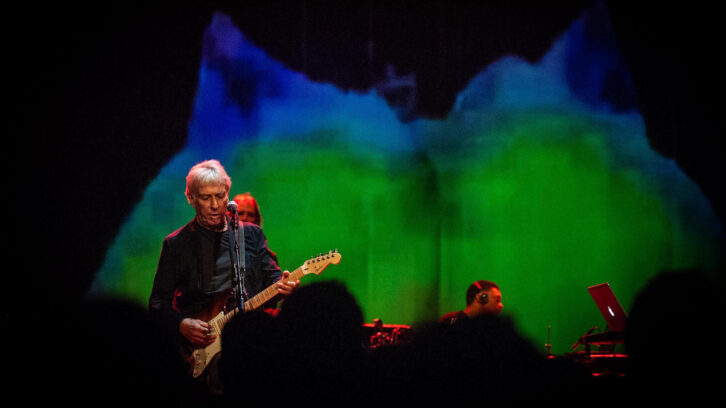
LOOKING FOR SOUNDS
They are always open to happy accidents, too. “When something malfunctions, that’s when we get really excited,” Boyer says. He linked all the MIDI instruments, machines and modules through iConnectivity boxes during the remodel, which can produce some unexpected results: “Hit the spacebar, and you can run into something interesting.”
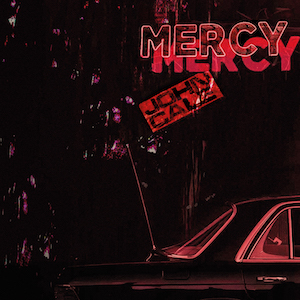 The main keyboards on Mercy include the Nord Lead, Arturia’s Brute, MiniBrute and MatrixBrute, and a Moog Sub 37. A couple of songs feature a Swarmatron: “It’s a very strange instrument, a drone-y thing that makes crazy low-bit, low-fi noises. There’s also an Orchestron; John recorded it at a session at Vox Studios, when they were still open.”
The main keyboards on Mercy include the Nord Lead, Arturia’s Brute, MiniBrute and MatrixBrute, and a Moog Sub 37. A couple of songs feature a Swarmatron: “It’s a very strange instrument, a drone-y thing that makes crazy low-bit, low-fi noises. There’s also an Orchestron; John recorded it at a session at Vox Studios, when they were still open.”
You might expect that tracks laid down during the early stages of a song would get replaced, but they often make it to the mix with Cale. “Mostly John wants to get the sound right during the writing process,” Boyer explains.
That said, songs will evolve over time. Indeed, Mercy was ready for an early 2020 release, but they hit pause in the face of the pandemic. In June 2021, they listened back and made a few changes. “We just wanted to refresh everything. A few songs even got a little bit more interesting with some sounds,” he says, and they added a song, “Night Crawling,” about Cale and David Bowie’s time together in New York.
“John’s always changing arrangements,” he says. “We never sit still.”
